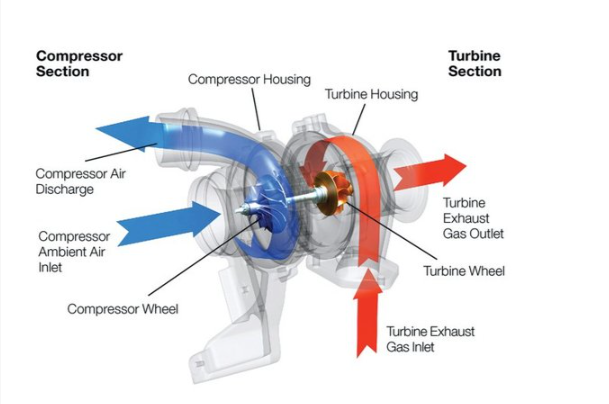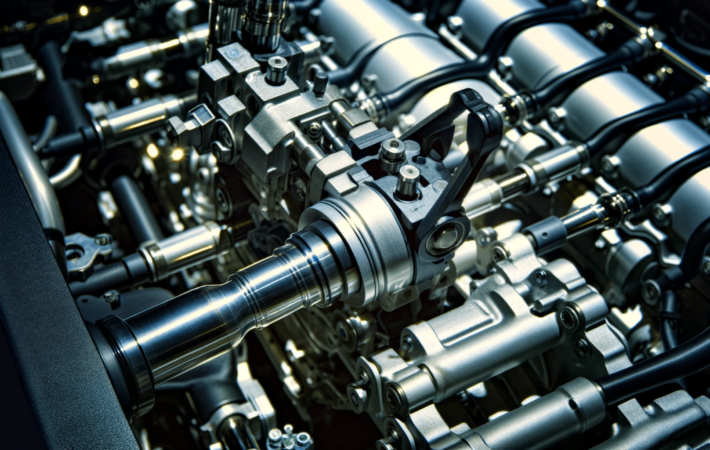What does a turbocharger do?
A turbocharger is a device that increases the efficiency and power output of an internal combustion engine. It works by compressing the air that enters the engine, which allows more fuel to be burned and generates more power. Turbochargers are commonly used in high-performance engines, such as those found in sports cars and trucks, as well as in diesel engines.
The basic design of a Turbocharged engine consists of two main components: a turbine and a compressor. The turbine is driven by exhaust gasses from the engine, while the compressor forces air into the engine. The exhaust gasses pass through the turbine, which spins a shaft that is connected to the compressor. As the compressor spins, it forces more air into the engine, which increases the power output.
One of the main benefits of a Turbocharging system is that it allows an engine to produce more power without increasing its size. This is because the turbocharger compresses the air that enters the engine, which means that more fuel can be burned in each cylinder. As a result, engines equipped with a Turbo boost can produce more power and torque than those without one, while still being relatively compact.
Turbochargers also have the benefit of improving fuel efficiency. By compressing the air that enters the engine, a turbocharger can increase the amount of oxygen available for combustion. This means that more fuel can be burned in each cycle, which results in more power and better fuel economy. This is particularly beneficial for diesel engines, which can already achieve good fuel efficiency, but can be further improved with the addition of a turbocharger.


However, there are some downsides to using a turbocharger. One of the main issues is that they can generate a lot of heat, which can be damaging to the engine. This is why many turbocharged engines are equipped with an intercooler, which cools the compressed air before it enters the engine. Another issue is that turbochargers can be expensive to install and maintain, which can make them less accessible to average consumers.
In summary, a turbocharger is a device that compresses the air that enters an engine, which allows more fuel to be burned and generates more power. It is a popular addition to high-performance engines, as well as diesel engines, and can help to improve both power output and fuel efficiency. However, they can also generate a lot of heat and be expensive to install and maintain.
Does turbo increase horsepower?
Turbocharging has become a popular way of boosting an engine’s power output without the need for a larger engine displacement. Turbochargers work by compressing the air entering the engine, resulting in a denser air charge. This denser air charge allows more fuel to be injected into the combustion chamber, resulting in a more powerful combustion event. But does turbocharging really increase horsepower? Let’s find out.
The short answer is yes, turbocharging can increase horsepower. As previously mentioned, turbocharging compresses the air entering the engine, allowing more fuel to be injected into the combustion chamber. This results in a more powerful combustion event and therefore more horsepower. The amount of horsepower increase varies depending on the engine’s design and the turbocharger’s size.

Turbocharging is a popular choice for increasing horsepower in high-performance engines. For example, many sports cars and high-performance sedans come equipped with Turbo kit.. The added horsepower allows for faster acceleration and higher top speeds. Turbocharging is also popular in the world of motorsports, where every bit of extra horsepower can make a significant difference in lap times.
However, it’s worth noting that turbocharging is not the only way to increase horsepower. Other methods such as supercharging, engine tuning, and engine swaps can also result in significant horsepower gains. In some cases, a combination of these methods may be used to achieve even greater horsepower increases.
It’s also important to keep in mind that turbocharging has its downsides. One major downside is turbo lag, which is the delay between pressing the accelerator pedal and the turbocharger producing enough boost to increase power. Turbo lag can be mitigated by using a smaller turbocharger or using a twin-turbo setup, but it’s still a concern for some drivers.
Another downside is increased complexity and potential maintenance costs. Turbochargers have many moving parts and require proper maintenance to ensure they function correctly. Additionally, the added stress on the engine can lead to increased wear and tear on engine components.
In conclusion, turbocharging can increase horsepower and is a popular choice for enthusiasts looking to boost their engine’s performance. However, it’s important to consider the downsides, including turbo lag and increased maintenance costs. As with any performance modification, it’s crucial to do your research and consult with experts before making any changes to your engine.


Leave a comment
Your email address will not be published. Required fields are marked *